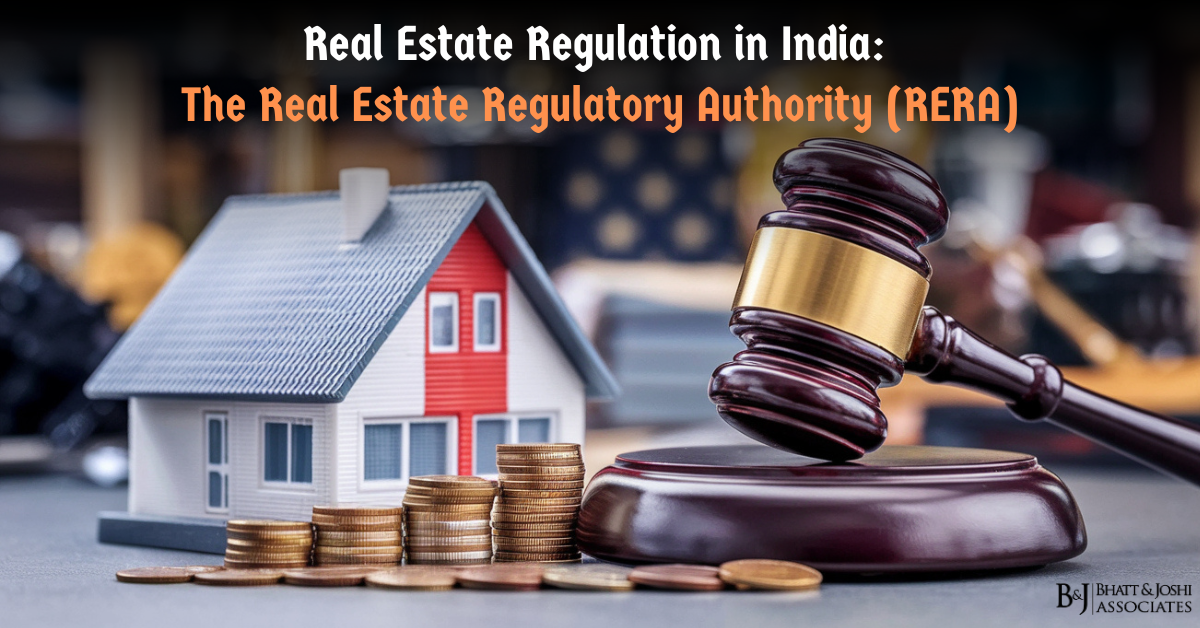Introduction
The Real Estate Regulatory Authority (RERA) represents a watershed moment in India’s real estate sector. Established under the Real Estate (Regulation and Development) Act, 2016, RERA aims to bring transparency, accountability, and efficiency to a sector that has long been plagued by delays, disputes, and lack of consumer protection. This comprehensive regulatory framework has fundamentally altered the landscape of real estate transactions in India, affecting developers, buyers, and other stakeholders in profound ways.
Historical Context
Prior to RERA, the Indian real estate sector was largely unregulated, leading to numerous issues such as project delays, fund diversion, and lack of standardization in property measurements. Buyers often found themselves at the mercy of developers, with little recourse in case of disputes. The need for a centralized regulatory authority had been felt for decades, but it wasn’t until the rapid urbanization and real estate boom of the early 21st century that the urgency became impossible to ignore.
The journey towards RERA began in 2009 when the Ministry of Housing and Urban Poverty Alleviation proposed a law for real estate regulation. After years of deliberation and stakeholder consultations, the Real Estate (Regulation and Development) Bill was introduced in the Rajya Sabha in 2013. It underwent several modifications before finally being passed as an Act in 2016, marking a new era in India’s real estate sector.
The Real Estate (Regulation and Development) Act, 2016
The Real Estate (Regulation and Development) Act, 2016, commonly known as RERA, came into effect on May 1, 2017. This landmark legislation aims to protect home-buyers as well as help boost investments in the real estate industry. The Act mandates that each state and union territory establish its own Regulatory Authority (RERA) which will frame regulations and rules according to the Act.
The preamble of the Act states its objectives clearly:
“An Act to establish the Real Estate Regulatory Authority for regulation and promotion of the real estate sector and to ensure sale of plot, apartment or building, as the case may be, or sale of real estate project, in an efficient and transparent manner and to protect the interest of consumers in the real estate sector and to establish an adjudicating mechanism for speedy dispute redressal and also to establish the Appellate Tribunal to hear appeals from the decisions, directions or orders of the Real Estate Regulatory Authority and the adjudicating officer and for matters connected therewith or incidental thereto.”
This comprehensive legislation covers various aspects of real estate transactions, from project registration to the rights and duties of promoters and allottees.
Structure and Composition of The Real Estate Regulatory Authority (RERA)
The Real Estate Regulatory Authority is established at the state level, with each state having its own RERA. The Act provides for a three-tier quasi-judicial mechanism:
- Real Estate Regulatory Authority
- Real Estate Appellate Tribunal
- Adjudicating Officers
Section 21 of the Act specifies the composition of the Authority:
“The Authority shall consist of a Chairperson and not less than two whole time Members to be appointed by the appropriate Government.”
The Chairperson and members are appointed for a term of five years or until they reach the age of sixty-five years, whichever is earlier. They must have adequate knowledge and professional experience of at least twenty years in urban development, housing, real estate development, infrastructure, economics, technical experts from relevant fields, planning, law, commerce, accountancy, industry, management, social service, public affairs or administration.
Key Provisions and Regulations of Real Estate Regulatory Authority (RERA)
RERA introduces several key provisions aimed at reforming the real estate sector:
- Mandatory Registration: All real estate projects where the total area to be developed exceeds 500 square meters or more than 8 apartments are proposed to be developed in any of the planning areas must be registered with RERA.
- Separate Account for Project Funds: 70% of the funds collected from buyers must be deposited in a separate bank account and can only be used for construction of that project.
- Carpet Area Definition: The Act clearly defines carpet area as “the net usable floor area of an apartment, excluding the area covered by the external walls, areas under services shafts, exclusive balcony or verandah area and exclusive open terrace area, but includes the area covered by the internal partition walls of the apartment.”
- Adherence to Approved Plans: Developers are prohibited from making any changes to the plans, structural designs, and specifications of the building or the plot without the consent of two-thirds of the allottees.
- After-sales Service: Developers are responsible for structural defects for five years after handing over the property to the buyer.
Section 11(4) of the Act states:
“The promoter shall be responsible for all obligations, responsibilities and functions under the provisions of this Act or the rules and regulations made thereunder or to the allottees as per the agreement for sale, or to the association of allottees, as the case may be, till the conveyance of all the apartments, plots or buildings, as the case may be, to the allottees, or the common areas to the association of allottees or the competent authority, as the case may be.”
These provisions aim to ensure transparency, accountability, and timely delivery of projects.
Registration Process for Real Estate Projects
The registration process under RERA is designed to be comprehensive and transparent. Developers are required to provide detailed information about the project, including:
- Land status
- Approvals
- Estimated completion time
- Layouts and plans
- Proforma of agreements
- Details of real estate agents, contractors, architects, structural engineers
Section 4(2) of the Act specifies:
“The promoter shall make an application to the Authority for registration of the real estate project in such form, manner, within such time and accompanied by such fee as may be specified by regulations made by the Authority.”
Once registered, the project details are made available on the RERA website, allowing potential buyers to make informed decisions.
Rights and Responsibilities of Stakeholders
RERA clearly defines the rights and responsibilities of various stakeholders:
Promoters:
- Must register their projects with RERA
- Provide all project information to buyers
- Adhere to approved plans and project specifications
- Rectify structural defects within 5 years of possession
Allottees (Buyers):
- Right to information about the project
- Right to know stage-wise time schedule of completion
- Right to claim possession as per agreement
- Right to refund with interest in case of default by promoter
Real Estate Agents:
- Must register with RERA
- Maintain books of accounts, records, and documents
- Facilitate the possession of all documents to which the allottee is entitled at the time of booking of any plot, apartment or building
Section 10(a) of the Act states the duties of promoters regarding veracity of the advertisement or prospectus:
“The promoter shall ensure that the advertisements or prospectus issued or published by the promoter in regard to the project shall be in accordance with the provisions of the Act and the rules and regulations made thereunder.”
Complaint Mechanism and Dispute Resolution
RERA provides a robust mechanism for complaint redressal and dispute resolution. Aggrieved parties can file complaints with the RERA of their state. The Authority is mandated to dispose of complaints within 60 days.
Section 31 of the Act allows any aggrieved person to file a complaint with the Authority or the adjudicating officer for any violation or contravention of the provisions of the Act.
The Act also provides for the establishment of Real Estate Appellate Tribunals to hear appeals from the decisions of RERA or the adjudicating officer. Section 43(5) of the Act states:
“The Appellate Tribunal shall dispose of the appeal as expeditiously as possible but not later than sixty days from the date of appeal.”
This multi-tier dispute resolution mechanism aims to provide speedy justice to aggrieved parties.
Penalties and Enforcement
RERA has stringent provisions for non-compliance. Penalties can be up to 10% of the estimated cost of the real estate project for non-registration and up to 5% for other violations. Repeated violations can lead to imprisonment of promoters for up to three years.
Section 59 of the Act specifies:
“If any promoter contravenes any other provisions of this Act, other than that provided under section 3 or section 4, or the rules or regulations made thereunder, he shall be liable to a penalty which may extend up to five per cent. of the estimated cost of the real estate project as determined by the Authority.”
These strict penalties serve as a deterrent against malpractices in the sector.
Impact on the Real Estate Sector
RERA has had a profound impact on the Indian real estate sector:
- Increased Transparency: With mandatory disclosures and regular updates, buyers now have access to much more information about projects.
- Improved Accountability: The clear definition of rights and responsibilities has made stakeholders more accountable.
- Boost to Buyer Confidence: The protective measures for buyers have increased consumer confidence in the real estate market.
- Consolidation in the Sector: Stricter regulations have led to the exit of many small and unorganized players, leading to consolidation in the sector.
- Standardization: RERA has brought about standardization in practices across the country, though with some state-wise variations.
Landmark Cases and Judgments
Several landmark cases have shaped the interpretation and implementation of RERA:
- Neelkamal Realtors Suburban Pvt Ltd & Anr. v. Union of India & Ors (2017): The Bombay High Court upheld the constitutional validity of RERA. The court observed:
“The Act is retroactive in nature and not retrospective. It applies to ongoing projects and future projects.”
- M/s Imperia Structures Ltd. v. Anil Patni & Anr. (2020): The Supreme Court held that remedies under RERA and Consumer Protection Act are concurrent. The court stated:
“The remedies under the Consumer Protection Act, 1986 are additional and not exclusive to the remedies under the RERA Act.”
- Newtech Promoters and Developers Pvt. Ltd. v. State of U.P. & Ors. (2021): The Supreme Court emphasized the importance of RERA in protecting homebuyers’ interests:
“The RERA Act was enacted in the year 2016 with the objective of ensuring greater accountability towards consumers, to reduce frauds and delays, and to set up a regulatory oversight mechanism to enforce contracts.”
These judgments have reinforced the authority of RERA and clarified its scope and application.
Challenges and Criticisms of Real Estate Regulatory Authority (RERA)
Despite its positive impact, RERA faces several challenges:
- Varied Implementation: Different states have implemented RERA to varying degrees, leading to inconsistencies across the country.
- Exclusions: Some states have excluded ongoing projects from RERA’s purview, diluting its effectiveness.
- Capacity Constraints: Many state RERAs lack adequate staff and infrastructure to handle the volume of cases.
- Overlapping Jurisdictions: The coexistence of RERA with other laws like the Insolvency and Bankruptcy Code has led to jurisdictional conflicts.
- Enforcement Issues: Despite stringent provisions, enforcement remains a challenge in many states.
State-wise Implementation of Real Estate Regulatory Authority (RERA)
While RERA is a central act, its implementation varies across states. Some states like Maharashtra, Gujarat, and Karnataka have been proactive in setting up robust RERA mechanisms, while others have lagged behind.
Maharashtra, for instance, has been a frontrunner in RERA implementation. The MahaRERA website provides comprehensive project information and has an efficient online complaint redressal system. As of 2021, MahaRERA had registered over 25,000 projects and resolved thousands of complaints.
RERA and Sustainable Development
RERA has the potential to promote sustainable development in the real estate sector. By mandating disclosures about project specifications, it indirectly encourages developers to adopt green building practices. Some state RERAs have gone a step further by introducing specific provisions for green buildings.
For instance, the Haryana RERA has introduced a provision for additional Floor Area Ratio (FAR) for green buildings. This aligns with the broader national goal of sustainable urban development.
International Comparisons
India’s RERA can be compared to similar regulatory frameworks in other countries:
- United Kingdom: The UK has the Property Ombudsman scheme, which is a voluntary mechanism for dispute resolution in the real estate sector.
- Singapore: The Urban Redevelopment Authority (URA) regulates the real estate sector in Singapore, with strict guidelines for developers.
- United States: Real estate regulation in the US is primarily at the state level, with each state having its own real estate commission.
While RERA draws inspiration from international practices, it is uniquely tailored to the Indian context, addressing specific issues plaguing the country’s real estate sector.
Future Outlook for Real Estate Regulatory Authority (RERA)
As RERA completes five years of implementation, several areas for improvement have been identified:
- Uniformity in Implementation: There’s a need for more uniform implementation across states to ensure consistent protection for homebuyers across India.
- Technological Integration: Greater use of technology, including blockchain for land records and AI for complaint resolution, could enhance RERA’s effectiveness.
- Expansion of Scope: There are discussions about bringing rental housing under RERA’s purview to create a comprehensive real estate regulatory framework.
- Strengthening Enforcement: Enhancing the enforcement capabilities of RERA authorities is crucial for the Act to achieve its full potential.
- Addressing New Challenges: As new models like co-living and mixed-use developments gain popularity, RERA may need to evolve to address these emerging trends.
Conclusion
The Real Estate Regulatory Authority (RERA) represents a paradigm shift in India’s approach to real estate regulation. By bringing transparency, accountability, and efficiency to the sector, RERA has significantly altered the dynamics between developers, buyers, and other stakeholders.
While challenges remain in terms of uniform implementation and enforcement, the positive impact of RERA on the real estate sector is undeniable. It has boosted buyer confidence, promoted professionalism among developers, and contributed to the overall maturation of the Indian real estate market.
As India continues on its path of rapid urbanization, the role of RERA in ensuring orderly and sustainable development of the real estate sector becomes even more critical. The evolution of RERA in response to emerging challenges and opportunities will be crucial in shaping the future of India’s urban landscape.
The journey of RERA thus far demonstrates India’s commitment to reforming and regulating its real estate sector. As the Act continues to evolve and strengthen, it holds the promise of fostering a more transparent, efficient, and buyer-friendly real estate market in India.














